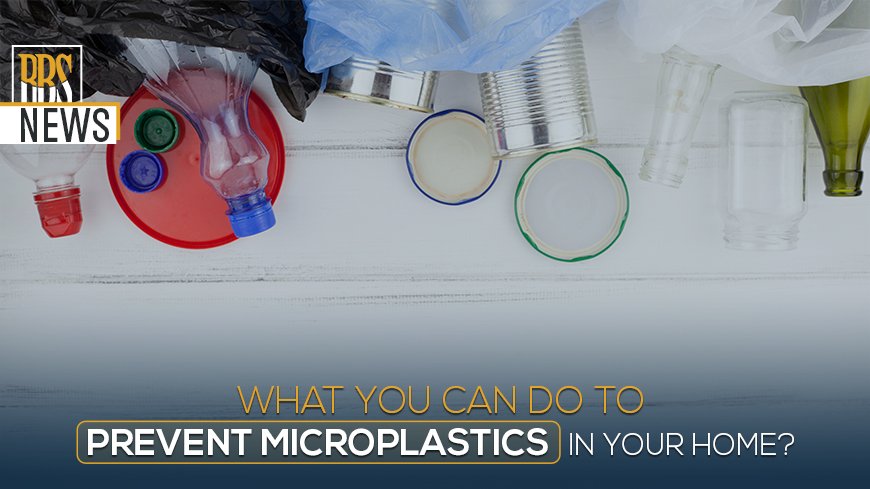- September 6, 2023
- Posted by: Muhammad Shehzad
- Category: RBS News

What you can do to prevent microplastics in your home? Plastic or microplastics are present everywhere in our lives, including food, water, and air. From eating our daily meals to cleaning our clothes, we are bound to use plastics. Plastic has many advantages, however, it also has a ton of drawbacks that we frequently neglect.
Introduction
Microplastics pollution is a growing issue that has an impact on both the environment and the food chain. It is essential to understand how to eliminate microplastics at home if we are to protect our planet. These are smaller than five millimeters in length and roughly the size of sesame seeds. In the ocean, there appear to be 24.4 trillion of these microplastics.
Microplastic Usage
We use plastics in a variety of products, such as flexible polyethylene in plastic bags, rigid polyvinyl chloride (PVC) in pipes, and construction materials. Even plastic utilizes in the majority of transportation as well as in furniture, toys, food packaging, medical equipment, and insulating materials.
The production of plastics worldwide has significantly expanded from more than 2 million tonnes in 1950 to 400 million tonnes in 2020.
Read: FBR Announces Relief From Taxation On The Transfer Of Immovable Property To Overseas Pakistanis
Ways to Prevent Microplastics
Choose Natural Fibers
Opt for textiles composed of natural fibers like cotton, linen, and wool rather than synthetic fabrics like polyester and nylon. Small bits of plastic are released into the water during the washing process of synthetic clothing and eventually find their way into our ecosystems. Natural fibers, on the other hand, biodegrade more quickly and generate fewer microplastics.
Improve Your Cleaning Habits
Cleaning supplies for the home can potentially include microplastics. Replace synthetic, abrasive scrubbers and cleaning cloths with more environmentally sound options. To prevent microplastics from entering waterways, look for washing machine filters or laundry bags that may capture microfibers.
Filter Your Tap Water
Due to the collapse of bigger plastic products, microplastics have found in tap water. Consider purchasing a water filter to help reduce your exposure to microplastics by removing these impurities from your drinking water.
Reduce Plastic Packaging
If possible, purchase goods that come in little or no plastic packaging when you do your shopping and carry your own reusable bags. By minimizing your plastic consumption at the source, you can reduce the risk of microplastics getting into your home.
Dispose of Plastics Properly
Make responsible disposal of plastic trash. Plastic objects are kept from breaking into tiny pieces that could form microplastics through proper disposal.
Read: APMIA And SCCI Sign Agreement To Modernize The Mining Industry
Conclusion
What you can do to prevent microplastics in your home? Responsible disposal methods and thoughtful consumer decisions are the first steps in reducing microplastics in your home. You can support the global effort to reduce microplastic and safeguard our environment for future prospects by making sensible decisions.
